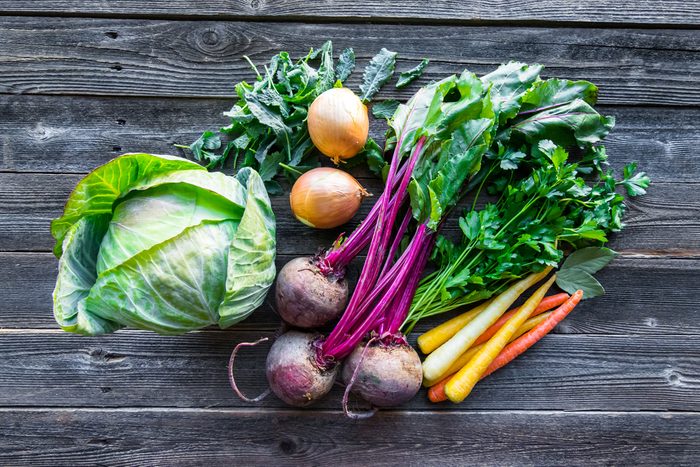
The high-fibre vegetables you won’t be able to get enough of
Are you eating enough vegetables that are high in fibre? Fibre may be the part of plants that people don’t break down or digest, but it does have a big impact on our health, says Heidi Bates, a registered dietitian with Tri-Nutrition Consulting in Sherwood Park, Alta. “In our bodies, fibre acts a bit like a sponge-it can grab things that are passing through our digestive tract and help to whisk them away,” she says. That’s why you hear about fibre lowering bad cholesterol levels. It latches on to some of the building blocks of cholesterol, ultimately helping to reduce its levels.
Because fibre is only found in plant-based foods, a rich-in-fibre diet is generally also high in vitamins and minerals and low in calories, fat, sugar and salt-exactly the type of eating plan registered dietitians recommend, Bates says. (Health Canada recommends 25-30 grams of fibre a day.) Here is a breakdown of some the highest-in-fibre veggies.
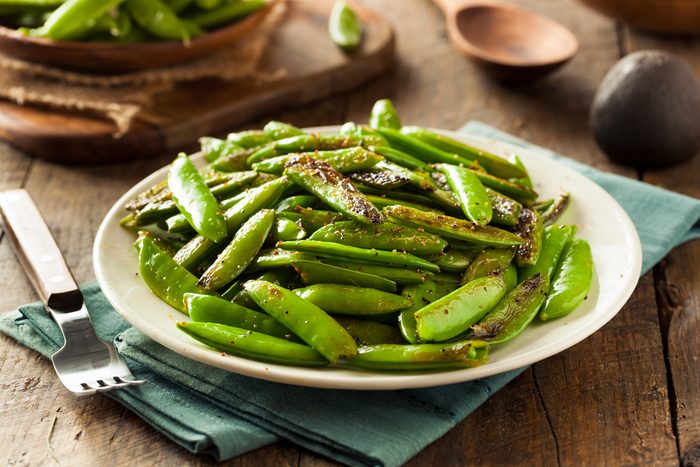
High-fibre vegetables: Peas, can I have some more
According to peas.org, the oldest pea ever found was almost 3,000 years old, discovered on the border of Thailand and Burma. However, these legumes are believed to have originated in the Middle East and Ethiopia. It may be stating the obvious (although perhaps not in this age of frozen foods), but peas grow in pods that look something like snow peas, only thicker, and must be shelled to reach the sweet, round prize within. Frozen peas are available year-round, but fresh local peas are at their peak during the height of summer.
How to eat them: Freshly shelled from the garden is the ultimate pea indulgence; they can be eaten raw, tossed in salads or very lightly cooked. Frozen peas can be added to your favourite stew or pasta sauce.
Fibre content: 5.6 grams per half-cup of fresh green peas.
If you want to start cooking with peas, try these four delicious recipes.
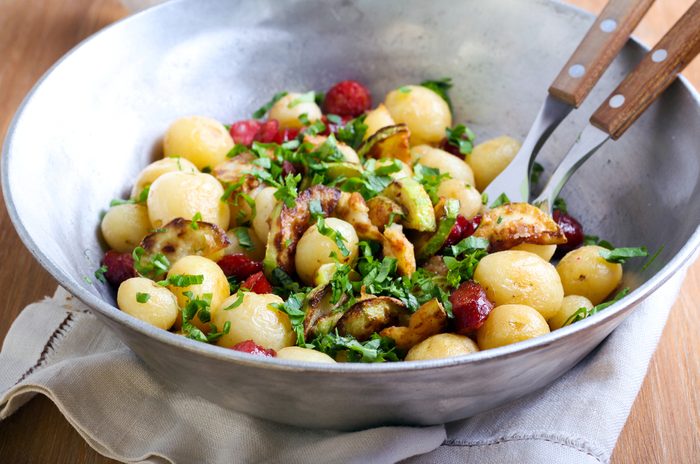
High-fibre vegetables: Trusty potatoes
Potatoes come in red, white, gold and purple hues, but all are full of potassium, vitamin C, folacin and fibre. Native to South America, potatoes were purportedly slow to catch on in popularity in the colonies of North America, because Europeans were suspicious of them. These days, they’re eaten all over the world (French fries, anyone?). Local potatoes can be stored through the winter. For those avoiding “white” foods including potatoes, sweet potatoes are another high-fibre option.
How to eat them: Boiled, mashed, fried, baked, steamed, grilled. Potatoes are extremely versatile, but differ from the other vegetables in your kitchen in that you must cook them.
Fibre content: 3.8 grams per medium baked potato with skin; 2.8 grams per half-cup cooked sweet potato.
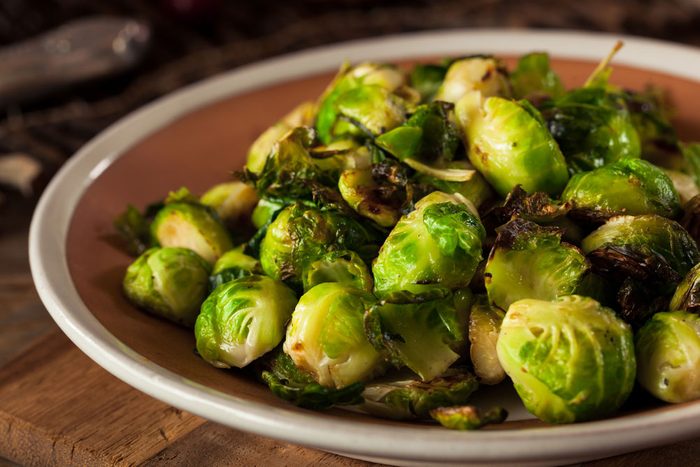
High-fibre vegetables: Bittersweet Brussels sprouts
It may be years since you’ve eaten your childhood dinner-table nemesis, the boiled Brussels sprout. This autumn crop isn’t usually a crowd-pleaser among the schoolyard set, but as an adult you might better enjoy the bittersweet flavours of this veggie that resembles a tiny cabbage. Supposedly named after the fact that they were seen in Brussels markets as early as the 1200s, today they’re grown all over North America, Europe and Australia, according to provincial information site Foodland Ontario. It’s a root vegetable, so local varieties keep their freshness almost all year round if stored in a cool place.
How to eat them: Forget boiling-steam or roast Brussels sprouts. Scoring an “X” in the base of each will help them to cook through to the stem.
Fibre content: 3 grams per half-cup cooked Brussels sprouts.
For a delicious side dish, this recipe is a real crowd-pleaser.
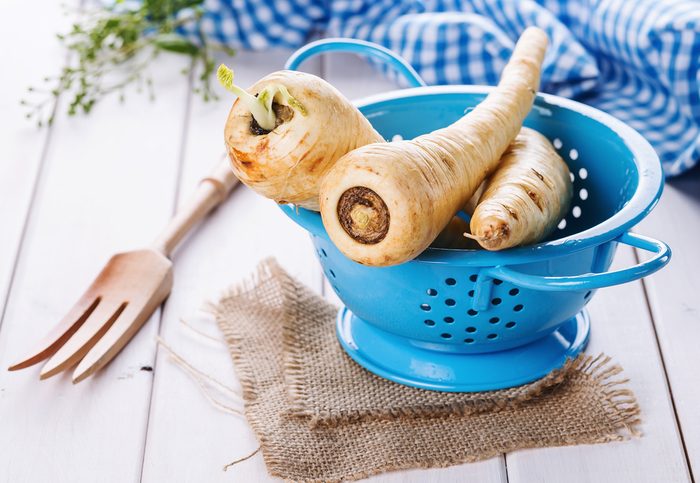
High-fibre vegetables: The underrated parsnip
Parsnips look like carrots, except they’re creamy or white in colour. They’re a bit nutty in flavour, and like carrots, they can be steamed, creamed, braised, roasted, stir-fried and boiled. They’re also high in vitamin C, potassium and folate, according to provincial website BC Fresh Vegetables. Parsnips, favoured at Lent in the Middle Ages, are high in all-important soluble fibre. “Soluble fibre – the kind found in vegetables and fruits – is important because of its ability to keep blood sugar levels in check and promote feelings of fullness that can prevent overeating,” says Bates. This is thought to be the reason for the parsnip’s popularity among those shunning meat at Lent.
How to eat them: A strong flavour when raw means parsnip crudités are probably not to most people’s liking, but they’re delicious braised, roasted or steamed. (Speaking of strong flavour, boost your health with this easy-to-make bone broth recipe.)
Fibre content: 2.7 grams per half cup.
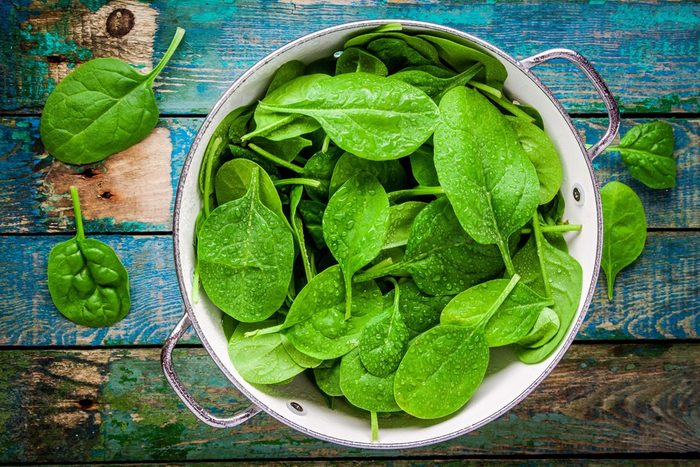
High-fibre vegetables: Satisfyingly spinach
Originating in Persia, this dark leafy green has a growing season that lasts from spring until fall. As a parent, I can tell you I’m surprised at how many recipes I can sneak cooked spinach into for extra nutrition and fibre, ranging from lasagna to hamburgers to brownies. (Nothing says fibre like a spinach and strawberry smoothie!)
“Because they can hold on to water, fibre-rich foods tend to keep us feeling full and satisfied for longer periods of time,” Bates says. “Plus, fibre-rich foods are digested in almost a time-release fashion where nutrients enter our blood stream at a consistent rate. This prevents the fluctuations in blood sugar levels that can play havoc with our personal energy levels and produce really challenging food cravings,” she says.
How to eat it: Baby spinach is great in a salad, but can be cooked or wilted too. Mature spinach leaves usually need to be rinsed many times to rid them of their sand, and are great steamed, gently boiled or stir-fried.
Fibre content: 2.3 grams per half-cup cooked spinach.
